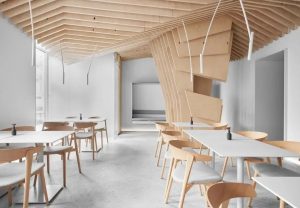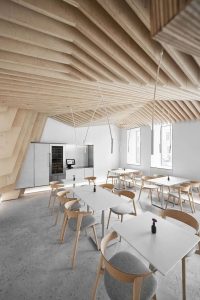Plywood is a three-layer or multi-layer plate material made of wood segments that are rotary cut into veneers or planed into thin wood, and then glued together with adhesive. Usually an odd number of layers of veneers are used, and adjacent layers of veneers are separated. The fiber directions are glued vertically to each other.
Plywood is one of the commonly used materials for furniture. A group of veneers is usually assembled and glued perpendicularly to each other in the direction of adjacent layers of wood grain. Usually, the surface panel and inner layer panels are symmetrically arranged on both sides of the central layer or core. The slab is made of glued veneers criss-crossed in the direction of the wood grain, and is pressed with or without heating. The number of layers is generally an odd number, but a few also have an even number. There is little difference in the physical and mechanical properties between the vertical and horizontal directions. Commonly used plywood types include three-plywood, five-plywood, etc. Plywood can improve wood utilization and is an important way to save wood.


1) Material advantages
- a. When laser cutting plywood, it is not easy to produce sawdust. It can reasonably and effectively utilize log resources and greatly improve the utilization rate of natural wood.
- b. Plywood has light bulk density and good bending resistance, which makes up for some of the natural defects of wood and has good decorative properties.
- c. It can be used in aircraft, ships, trains, automobiles, home decoration, buildings, containers and other places where panels are needed.
2) Material shortcomings
- a. Insufficient smoothness: The surface of plywood does not have density boards and solid wood boards are clean and smooth, so it is not suitable for use in single-sided parts, such as cabinet doors, window sashes, etc.
- c. Poor plasticity: Plywood that has not been fully dried may have problems such as substandard quality and production process, resulting in serious deformation of the board during use, making it difficult to adjust it by external forces.
- d. Appearance defects: The adhesive penetrates the plywood and glue marks are likely to appear on the board surface. The moisture content of the veneer is too high, the aging time is insufficient, and the slab is too large, etc., which may affect the appearance of the plywood.
The usual length and width specifications are: 1220×2440mm, and the thickness specifications are generally: 3, 5, 9, 12, 15, 18mm, etc. The main tree species are: beech, camphor, willow, poplar, eucalyptus, etc.
Link to this article:What Is Plywood
Reprint Statement: If there are no special instructions, all articles on this site are original. Please indicate the source for reprinting.:ODM Wiki,thanks!^^